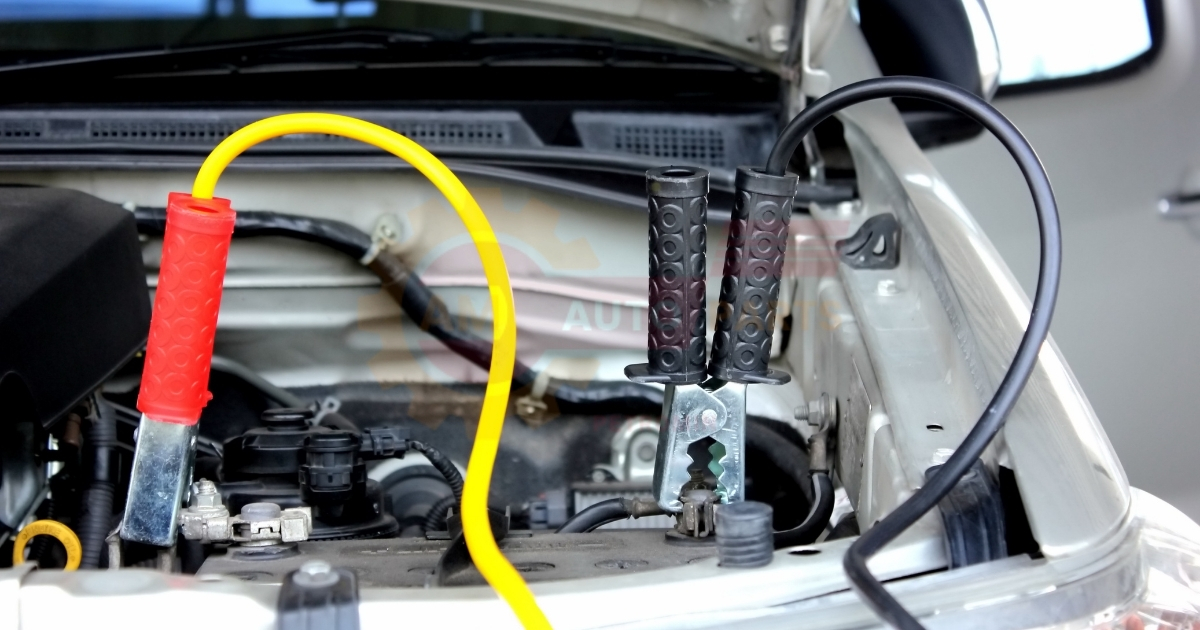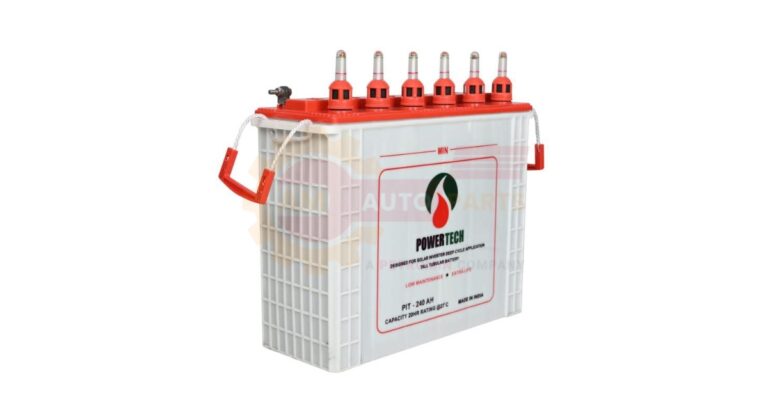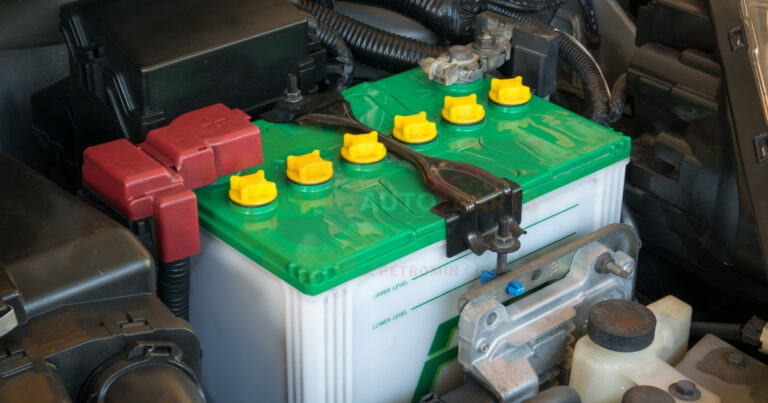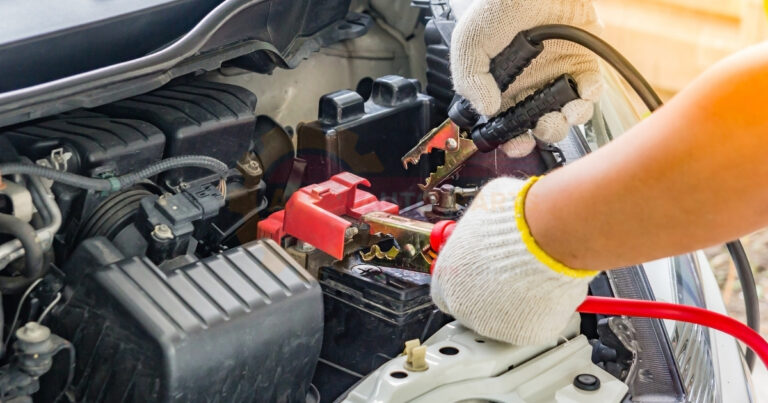What Is Recharging a Car Battery: A Comprehensive Guide
Understanding Car Battery Recharging
Definition and Process
Recharging a car battery is the process of restoring electrical energy to a depleted battery, allowing it to power your vehicle’s electrical systems and start the engine. This process involves supplying a controlled electrical current to the battery, which reverses the chemical reactions that occur during discharge.
When a battery is recharged, lead sulfate on the plates is converted back into lead and lead dioxide, while the electrolyte solution regains its sulfuric acid concentration. This restoration of the battery’s chemical composition enables it to store and provide electrical energy once again.
Importance of Battery Maintenance
Regular battery maintenance, including recharging when necessary, is crucial for several reasons:
- Ensures reliable vehicle starting
- Prolongs battery life
- Prevents unexpected breakdowns
- Maintains optimal performance of electrical systems
Proper battery care can save you money in the long run by reducing the frequency of replacements and avoiding costly roadside assistance calls.
| Benefits of Battery Maintenance | Consequences of Neglect |
| Extended battery lifespan | Premature battery failure |
| Consistent vehicle performance | Unreliable starting |
| Cost savings over time | Increased repair expenses |
| Reduced environmental impact | Potential safety hazards |
Signs Your Car Battery Needs Recharging
Slow Engine Crank
A slow engine crank is one of the most common indicators that your car battery may need recharging. When you turn the key in the ignition, you might notice that the engine takes longer than usual to start or makes a sluggish cranking sound. This occurs because the battery doesn’t have enough power to quickly turn over the engine.
If you experience this symptom, it’s essential to address it promptly to avoid being stranded with a completely dead battery.
Dim Headlights and Electrical Issues
Another telltale sign of a battery in need of recharging is dim headlights or other electrical issues. As the battery’s charge depletes, it struggles to provide sufficient power to various electrical components in your vehicle. You might notice:
- Headlights appearing less bright than usual
- Interior lights dimming or flickering
- Power windows operating more slowly
- Radio or infotainment system malfunctioning
These symptoms often worsen when multiple electrical systems are in use simultaneously.
Battery Warning Light on Dashboard
Modern vehicles are equipped with sophisticated monitoring systems that can detect when the battery’s charge is low. If your car’s battery is not holding a charge or is close to failing, you may see a battery warning light illuminate on your dashboard.
This light typically resembles a battery symbol and serves as an early warning system to alert you of potential issues. Don’t ignore this indicator, as it could prevent you from being caught off guard with a dead battery.
- Common battery warning signs:
- Illuminated battery icon on dashboard
- “Check Battery” message on display
- Red or amber light in the shape of a battery
Methods for Recharging a Car Battery
Using a Battery Charger
One of the most reliable methods for recharging a car battery is using a dedicated battery charger. These devices are designed to safely and efficiently restore a battery’s charge. According to AM Autoparts, using a quality battery charger can significantly extend the life of your vehicle’s battery.
When using a battery charger:
- Choose the appropriate charger for your battery type
- Connect the charger correctly, observing polarity
- Select the proper charging rate
- Monitor the charging process to prevent overcharging
Jump-Starting from Another Vehicle
Jump-starting is a quick way to get your car running if the battery is too weak to start the engine. This method involves using the electrical system of another vehicle to provide the necessary power to start your car.
Steps for jump-starting:
- Position the vehicles close together, but not touching
- Connect the jumper cables in the correct order
- Start the working vehicle and let it run for a few minutes
- Attempt to start the vehicle with the dead battery
- Once started, keep the engine running to allow the alternator to charge the battery
Alternator Charging While Driving
Once your car is running, the alternator takes over the job of charging the battery. Driving your vehicle for an extended period can help recharge a weak battery. However, this method is most effective for batteries that are only slightly discharged.
For optimal charging through driving:
- Plan for a drive of at least 20-30 minutes
- Avoid short trips or stop-and-go traffic
- Minimize the use of electrical accessories during the drive
Choosing the Right Battery Charger
Types of Car Battery Chargers
Selecting the appropriate battery charger is crucial for effective and safe recharging. There are several types of chargers available, each with its own features and benefits:
- Trickle Chargers: Slow, steady charging for long-term maintenance
- Smart Chargers: Automatic adjustment of charging rate and voltage
- Fast Chargers: Rapid charging for quick results
- Multi-Stage Chargers: Combine different charging modes for optimal results
Factors to Consider When Selecting a Charger
When choosing a battery charger, consider the following factors to ensure you get the best fit for your needs:
- Battery type and size
- Charging speed requirements
- Safety features (e.g., overcharge protection)
- Portability and ease of use
- Additional features (e.g., battery testing, reconditioning)
| Charger Type | Pros | Cons |
| Trickle | Safe for long-term use | Slow charging |
| Smart | Automatic operation | Higher cost |
| Fast | Quick results | Potential for overheating |
| Multi-Stage | Versatile and efficient | More complex to use |
Step-by-Step Guide to Recharging Your Car Battery
Safety Precautions
Before attempting to recharge your car battery, it’s essential to prioritize safety. Car batteries contain sulfuric acid and can produce explosive gases, making proper handling crucial. Follow these safety precautions:
- Wear protective eyewear and gloves
- Work in a well-ventilated area
- Keep open flames and sparks away from the battery
- Disconnect the battery if required by the manufacturer
Preparing the Battery
Proper preparation ensures effective and safe charging. Follow these steps to prepare your car battery:
- Clean the battery terminals with a wire brush
- Check the electrolyte level if it’s a non-sealed battery
- Inspect for any visible damage or corrosion
- Ensure the battery is securely mounted in the vehicle
Connecting the Charger
Correctly connecting the battery charger is crucial for safe and effective charging. Follow these steps:
- Identify the positive (+) and negative (-) terminals
- Connect the red clamp to the positive terminal
- Attach the black clamp to the negative terminal or a grounded metal part
- Double-check all connections before proceeding
Monitoring the Charging Process
Once the charger is connected, it’s important to monitor the charging process:
- Set the appropriate charging rate on the charger
- Observe the charger’s indicators for progress
- Check the battery periodically for signs of overheating
- Disconnect the charger once charging is complete
- Tips for successful charging:
- Follow the charger manufacturer’s instructions
- Don’t leave the battery charging unattended for long periods
- Avoid overcharging by using a smart charger or timer
How Long Does It Take to Recharge a Car Battery?
Factors Affecting Charging Time
The time required to recharge a car battery can vary significantly based on several factors:
- Battery capacity and state of charge
- Charger output (amperage)
- Battery age and condition
- Ambient temperature
A completely discharged battery will take longer to recharge than one that is only partially depleted. Similarly, a higher amperage charger will recharge a battery faster than a lower amperage one.
Estimating Charging Duration
While exact charging times can vary, here are some general guidelines:
- Trickle chargers (1-2 amps): 24-48 hours for a full charge
- Standard chargers (4-8 amps): 10-24 hours for a full charge
- Fast chargers (10-20 amps): 2-4 hours for a full charge
It’s important to note that these are estimates, and actual charging times may differ. Always refer to your specific charger’s instructions and monitor the charging process to avoid overcharging.
| Charger Type | Amperage | Estimated Full Charge Time |
| Trickle | 1-2 amps | 24-48 hours |
| Standard | 4-8 amps | 10-24 hours |
| Fast | 10-20 amps | 2-4 hours |
Preventing Overcharging and Battery Damage
Risks of Overcharging
Overcharging a car battery can lead to serious problems and potentially dangerous situations. When a battery is overcharged, it can result in:
- Excessive heat generation
- Electrolyte boiling and loss
- Plate warping and internal damage
- Shortened battery lifespan
- In extreme cases, battery explosion
To avoid these risks, it’s crucial to use the correct charging method and equipment, and to monitor the charging process carefully.
Using Smart Chargers
Smart chargers, also known as automatic or microprocessor-controlled chargers, offer a safer and more efficient way to recharge car batteries. These chargers use advanced technology to:
- Detect the battery’s state of charge
- Adjust charging rate and voltage automatically
- Switch to maintenance mode when the battery is fully charged
- Provide protection against overcharging, short circuits, and reverse polarity
By using a smart charger, you can significantly reduce the risk of overcharging and extend the life of your car battery.
- Benefits of smart chargers:
- Safer charging process
- Optimal charging for different battery types
- Extended battery life
- Reduced risk of overcharging damage
When to Replace vs. Recharge Your Car Battery
Signs of a Failing Battery
While recharging can often restore a weak battery, there are times when replacement is necessary. Look out for these signs that indicate your battery may be failing:
- Battery age exceeding 3-5 years
- Frequent need for jump-starts
- Swollen or misshapen battery case
- Persistent electrical issues even after recharging
- Failure to hold a charge for extended periods
If you notice these symptoms, it may be time to consider replacing your battery rather than attempting to recharge it.
Cost Comparison: Recharging vs. Replacing
When deciding whether to recharge or replace your car battery, consider the following cost factors:
| Recharging Costs | Replacement Costs |
| Charger purchase/rental | New battery purchase |
| Electricity usage | Installation fees (if applicable) |
| Time investment | Disposal fees for old battery |
While recharging is generally less expensive in the short term, repeatedly recharging a failing battery can lead to inconvenience and potential damage to your vehicle’s electrical system. In such cases, replacement may be more cost-effective in the long run.
Maintaining Your Car Battery for Longevity
Regular Inspection and Cleaning
Proper maintenance can significantly extend the life of your car battery. Follow these tips for regular inspection and cleaning:
- Check battery terminals for corrosion monthly
- Clean terminals with a mixture of baking soda and water
- Inspect battery casing for cracks or damage
- Ensure battery is securely mounted in the vehicle
- Test battery voltage periodically with a multimeter
Regular maintenance not only prolongs battery life but also helps prevent unexpected failures and costly repairs.
Proper Storage Techniques
If you need to store your vehicle for an extended period, proper battery care is essential. Follow these storage techniques to maintain your battery’s health:
- Disconnect the negative terminal to prevent parasitic drain
- Store the battery in a cool, dry place if removed from the vehicle
- Use a battery maintainer for long-term storage
- Avoid storing on concrete floors, which can accelerate discharge
- Recharge the battery every 30-60 days during storage
By following these storage techniques, you can ensure your battery remains in good condition and ready for use when needed. Automotive power threshold is the point where a car’s engine starts to produce enough power to move the vehicle forward Ideal car voltage A car battery should have about 12 to 14 volts for the vehicle to run properly
- Tips for battery storage:
- Keep battery clean and dry
- Avoid extreme temperatures
- Use a battery box for added protection
- Label battery with storage date for reference






